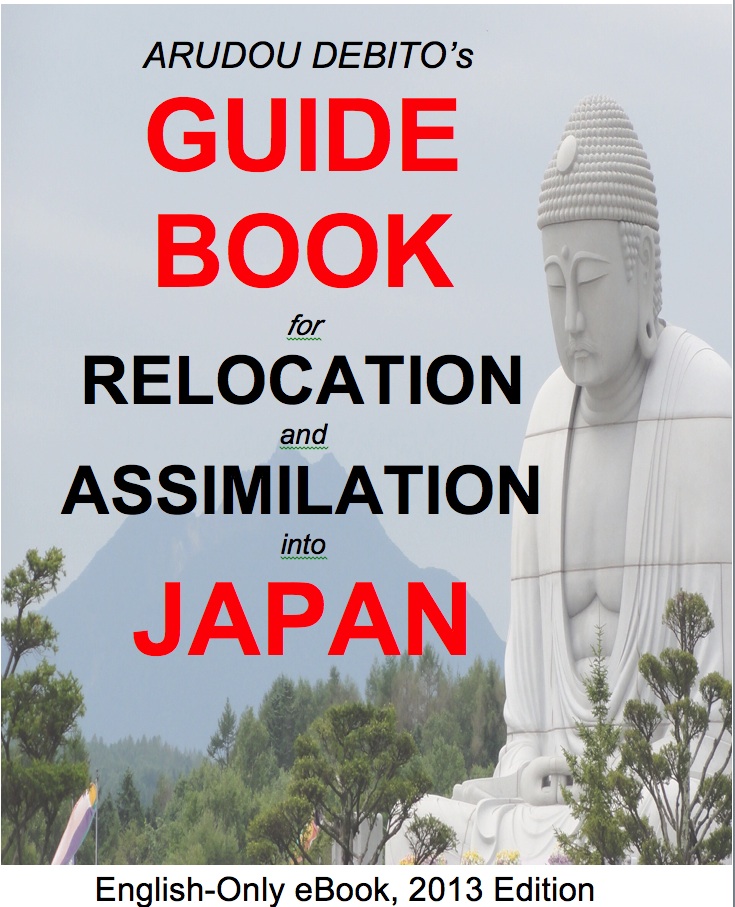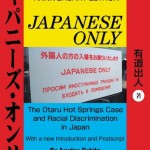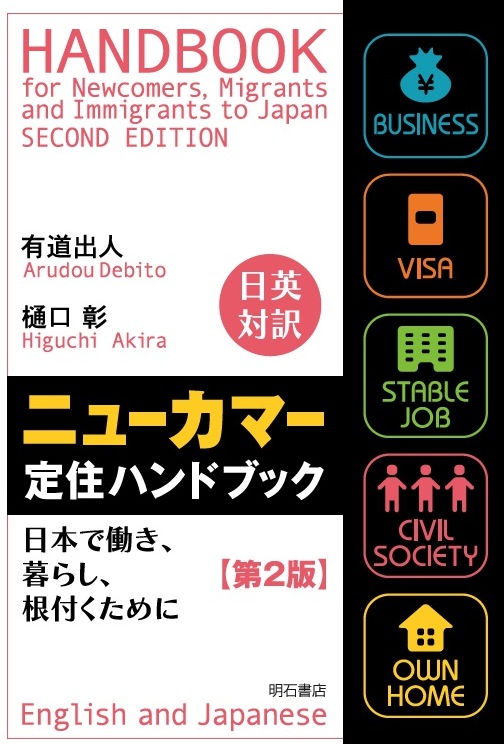mytest
Books, eBooks, and more from Debito Arudou, Ph.D. (click on icon):





![]()


UPDATES ON TWITTER: arudoudebito
DEBITO.ORG PODCASTS on iTunes, subscribe free
“LIKE” US on Facebook at http://www.facebook.com/debitoorg
https://www.facebook.com/embeddedrcsmJapan
http://www.facebook.com/handbookimmigrants
https://www.facebook.com/JapaneseOnlyTheBook
https://www.facebook.com/BookInAppropriate
If you like what you read and discuss on Debito.org, please consider helping us stop hackers and defray maintenance costs with a little donation via my webhoster:

All donations go towards website costs only. Thanks for your support!
Visible Minorities: Local Governments Classifying Japanese Citizens as Foreigners
Shingetsu News Agency, Dec 16, 2019. By Debito Arudou
http://shingetsunewsagency.com/2019/12/16/visible-minorities-local-governments-classifying-japanese-citizens-as-foreigners/
SNA (Tokyo) — According to the Japanese government, our resident Non-Japanese (NJ) population reached yet another new record, at 2.8 million last June. Last April, Japan started offering new visa regimes to greatly expand the NJ labor force, in response to Japan’s aging society and shrinking population. This, plus steady numbers of permanent residents, international marriages, and naturalizing citizens, are expanding our multicultural and multiethnic communities.
In response, local governments have been trying to accommodate the diversity through new concepts and policies. It started in earnest as far back as 2001 with the Hamamatsu Declaration, where multiple cities and towns near Shizuoka Prefecture called upon the national government to assist them in providing their NJ residents with education, welfare benefits, and streamlined administration. Since then, local governments have generally made positive proposals in good faith.
But sometimes they get it wrong. Last month, Debito.org reported how the city of Nagoya uses a very problematic term in their documents: Gaikokujin Shimin.
The closest translation would be a “foreigner city resident/citizen” (as opposed to, er, a gaikokujin kokumin, the contradictory “foreigner Japanese citizen”?). But the point is that people covered by this term officially belong in the city as dwellers and participants.
The concept sounds inclusive until you see how it’s officially being defined. According to one of Nagoya city’s “General Plans,” dated August 2018, a Gaikokujin Shimin is, as I translate it from the text:
“In addition to people with foreign nationalities with an address within Nagoya city, people like those who obtained Japanese citizenship, children born from international marriages, people with foreign cultures in their backgrounds, and people who have foreign roots.”
(Original Japanese: 名古屋市内に住所を有する外国籍の人のほか、日本国籍を取得した人や国際結婚によって生まれた子どもなど外国の文化を背景に持つ人など、外国にルーツを持つ人。)
Let’s mull that over: This definition stretches “foreigner” far beyond the basic legal definition of someone with foreign citizenship. It also means Japanese citizens are foreigners.
As explicitly stated in Nagoya’s definition, even if you naturalize you’re still a gaikokujin, regardless of Japan’s Nationality Law. You can’t escape.
How about if you’re born in Japan to a Japanese but have one foreign parent? A “one-drop rule” seems to apply. You’re still a gaikokujin. It’s the same for all your descendants in perpetuity, what with “roots in a foreign country.”
What if you have any foreign cultures in your background? Such as a stint living overseas as an exchange student or as a kikoku shijo (returnee child)? Gaikokujin, now and forever.
Further, couldn’t you stretch “background” into “experience,” e.g., being acculturated through foreign friends with or having a romantic relationship with a foreigner? This is what you get when you stray from The Tribe: You get officially gaikokujin-ized.
But Nagoya city isn’t alone in this careless alienation. Google “Gaikokujin Shimin” in Japanese and you’ll find oodles of others: Tokyo Hachioji, Saitama, Kawasaki, Hiroshima, Kitakyushu, Toyohashi, Kofu, Sakai… Even Aichi Prefecture has tweaked the term into Gaikokujin Kenmin (foreign prefectural citizen).
That degree of legitimacy means the term was probably handed down from the national government, and that further explains its shortsightedness. I’ve written extensively elsewhere how national committees making policies for “foreigners” generally don’t include any, or any member who knows much about Japan’s diversity. So that’s what you get: official terms so staggeringly oblivious to reality they become exclusionary epithets.
If policymakers wanted to be inclusive, how about a term that doesn’t allude to legal status? For example, how about “multicultural citizen/resident” (tabunka shimin/jumin)? Or “international citizen/resident” (kokusai shimin/jumin)? These terms have been circulating for decades, and they allow you to belong to a place while being simultaneously diverse and Japanese.
Instead, by reinforcing a binary of “anything not 100% Japanese must be foreign,” Gaikokujin Shimin goes beyond issues of nationality and into eugenics.
Have we learned nothing from history? By making “foreigner” status inescapable even across generations, Gaikokujin Shimin toes the same path that ultimately led to officials forcing people to wear a Star of David. It is a profound step backwards in the face of Japan’s inevitable multiethnicization. Its use should be immediately abolished.
ENDS
More information and sources at https://www.debito.org/?p=15820.
======================
Do you like what you read on Debito.org? Want to help keep the archive active and support Debito.org’s activities? Please consider donating a little something. More details here. Or if you prefer something less complicated, just click on an advertisement below.
4 comments on “My SNA Visible Minorities column 5: “Local Governments Classifying Japanese Citizens as Foreigners”, Dec. 16, 2019 (full text)”
That was an awesome article! Well done!
This must not go unchallenged. Thanks for getting this out.
“called upon the national government to assist them in providing their NJ residents with education, welfare benefits, and streamlined administration.”
Smells fishy to me… The Japanese citizens who were born in to mixed ethnicity marriages, and the married couples themselves are already getting all the normal government services that other citizens also get, am I right? And the Japanese citizens who were ‘exposed to other cultures’ don’t suddenly lose their brains and are also getting all the normal government services. Right? Why are they expanding this class of peoples who need special government assistance to include people who have been exposed to another culture.??? Why oh why?
Oh, yes, it is to re-enforce the notion of racial/ethnic/cultural purity of Japanese people. That is the goal.
Don’t put up with it. Don’t let these asians denigrate you because of the people you associate or have associated with.
We have Mr. Abe to thank and his “back to beautiful Japan” policy for this.